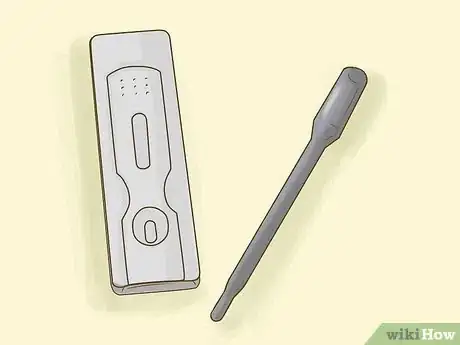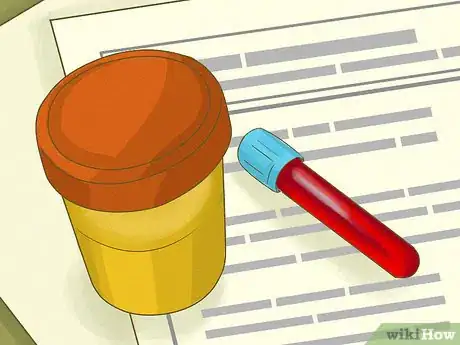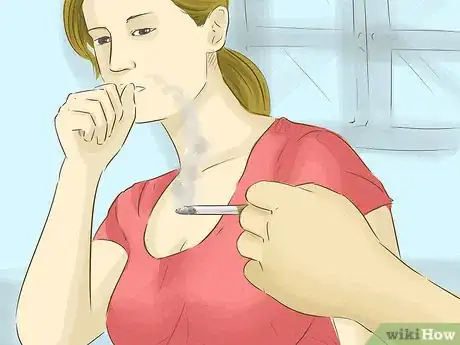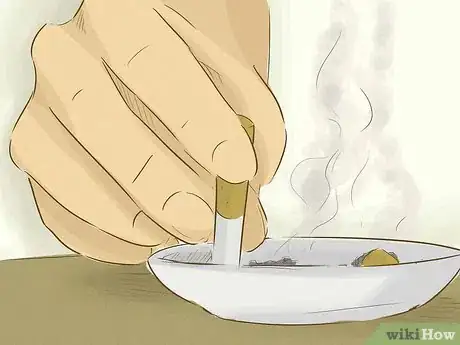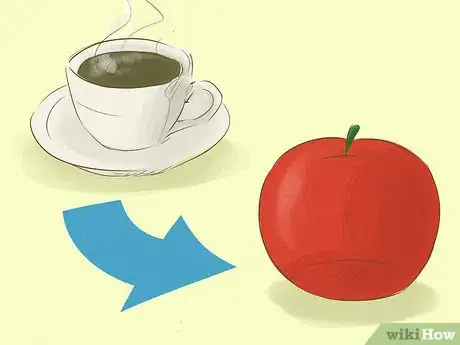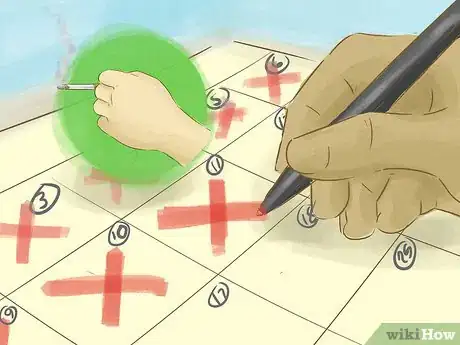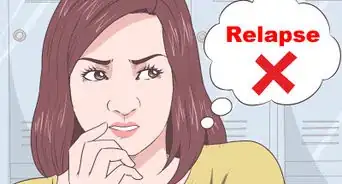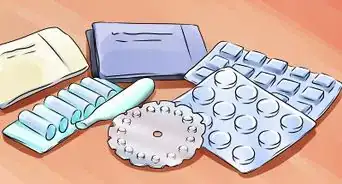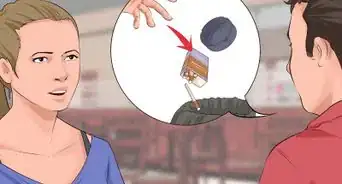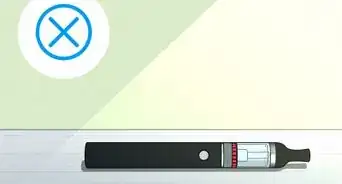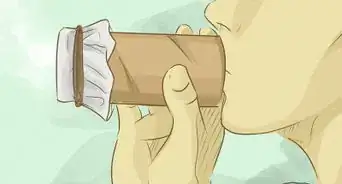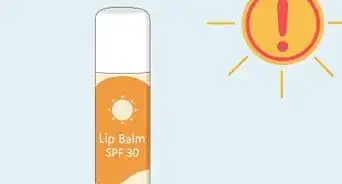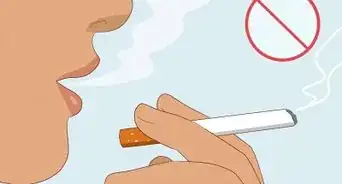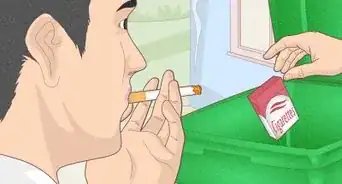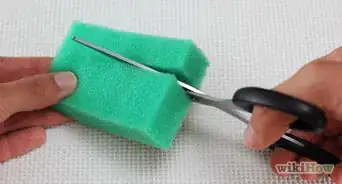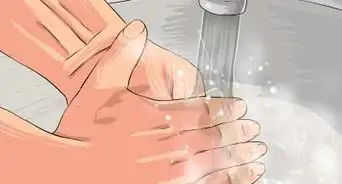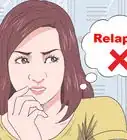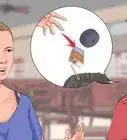wikiHow is a “wiki,” similar to Wikipedia, which means that many of our articles are co-written by multiple authors. To create this article, 13 people, some anonymous, worked to edit and improve it over time.
There are 12 references cited in this article, which can be found at the bottom of the page.
wikiHow marks an article as reader-approved once it receives enough positive feedback. This article received 19 testimonials and 90% of readers who voted found it helpful, earning it our reader-approved status.
This article has been viewed 533,081 times.
Learn more...
Tobacco tests are generally performed by screening for cotinine, since nicotine leaves the body fairly quickly. Cotinine usually stays in your system for about a week. You can learn to give yourself the best chance to pass these screens and stay off nicotine afterward, if you want to keep going with what you've started.
Steps
Passing the Screen
-
1Make sure the tobacco test is being performed legally. While South Carolina is the only state that has outlawed tobacco screens entirely[1] it's important to know that more than half the states in the United States have provisions in place that prevent employers from establishing hiring practices or incorporating punishment based on your activities outside of work, including tobacco use.[2] If you live in one of the 29 states with these provisions in place, you don't need to submit for a tobacco screen willfully.
- Click here for a state-by-state breakdown of tobacco screening laws.
-
2Understand how the screen works. "Tobacco tests" are usually performed by screening for cotinine, and are usually some combination of mouth swabs, urinalysis, and blood testing.[3] Cotinine is the primary metabolite of nicotine. Nicotine leaves the body in a few hours, but cotinine has a longer half-life, and is usually present for up to a week.
- Cotinine has a half-life of 15 hours, meaning that half of all the trace leaves your body every 16 hours, or so. If you're a light smoker, most of it should be gone in 48 hours, depending on how much you smoke, but most tests will pick up trace amounts, especially in the mouth swab.[4]
- Cotinine tests screen for smokable as well as smokeless tobacco, including vape pens and other e-cigarettes. [5]
-
3Stop using all kinds of tobacco at least 5-7 days before the test. Depending on how much you smoke, there's no way of knowing how much time you'll need to be all the way in the clear, but with the right combination of techniques, you can be fairly confident that you'll pass if you stop using any kind of nicotine 3-4 days before your test for lighter smokers and up to 2 weeks for heavier smokers. Read the next section to learn how to quit for a week, or more.[6]
- If you smoke in excess of a pack a day, may need to quit smoking farther out ahead of your test. It can't ever hurt to stop earlier, if possible.
- If you're a social smoker, or only smoke occasionally, just make sure you quit a few days leading up to the test and you should be fine.
-
4Flush out your system by drinking diuretics. Any time you've got to pass a urine screen and you're worried about cutting it close, start increasing the amount of fluids you're drinking throughout the day.[7]
- Drink plain filtered water. It's good to drink as much as two liters per day, or about half a gallon, to keep your body flushing itself regularly.
- Drink warm water with a little bit of lemon in it. To break it up, try warm water with garlic, leeks, or ginger to help your body eliminate fluids.
- Drink herbal tea, containing ginger, dandelion root, juniper, which are believed to have natural diuretic properties. [8]
- Drink lots of natural cranberry juice. Most commercial drinks labelled "cran" something or other are really low in actual cranberry juice and high in sugar and apple. If you can, try to get real cranberry juice that's 100% cranberry for the best diuretic effect.
-
5Don't blow money on "detox" drinks. Go to any head shop and you can find a variety of expensive beverages that all guarantee you can pass any drug or tobacco screen and keep smoking right up to the test. Read the ingredients. These drinks are usually just some combination of fruit juices and electrolytes that you'll pay an arm and a leg for, which won't be any more effective than drinks you can get for free, or for much cheaper. Use some smarts and avoid throwing money away on these drinks.
-
6Blame second-hand smoke. If trace amounts show up on your screen, it is possible to blame a smoky bar, a smoky band practice, or other possible second-hand smoke encounters, although this may conflict with prior questionnaire information that you may have filled out in anticipation of the test.[9]
- Most cotinine screens are performed in the workplace for insurance purposes. If a trace amount showed up, you can usually get out of it pretty easily with an excuse like this.
- If you smoke the day of the test, the amounts will be much higher, though, and you won't be able to blame second-hand smoke for that. You still need to quit, for a few days at least.
Quitting Smoking Before the Screen
-
1Try tapering before you quit. If you know about the test ahead of time, start tapering your usage as much as possible to make it through the week before the test more easily. You'll be taking it easier on your body if you use less tobacco over a period of two weeks, leading up to the test. This will also make your chances of quitting entirely much more likely.[10]
- Try smoking or using about half the amount of tobacco you normally use, each day, progressively tapering down. Start as soon as you find out about the test.
- If you know about the test far enough out, start using the gum or patches as quickly as possible to address the psychological addiction as quickly as possible.
-
2Learn the ten minute delay. If you want to smoke, just wait. Don't give in right away. Give it ten minutes, and do something else. It won't be as bad as you think, and the craving may dissipate. At the end of that ten minutes, re-evaluate your craving.
- As you work to quit, keep extending that amount of time that you delay each one. The cravings will become more and more manageable, the more you can control them.
-
3Expect withdrawal symptoms. If you're a moderate to heavy user of any type of nicotine, cutting it off abruptly will come with a variety of physical and psychological withdrawal symptoms. Depending on your usage, they may be mild or severe, including symptoms like anxiety, sleeplessness, and headaches.[11]
- The first three days will be the worst. You'll likely feel anxious, and probably have a headache, and have some trouble sleeping. Just stay focused on getting through those first three days, and then it'll get easier.
- Unfortunately, you won't be able to use nicotine replacements like patches or lozenges during the week leading up to the test, because the test will flag this cotinine in your system. You'll need to be off all nicotine completely leading put to the test.
-
4Avoid triggers, for the time being. If you regularly have a cigarette with a cup of coffee, or during your break at work, identify those situations so you can better anticipate them and prepare for them, possibly avoiding those situations entirely, or finding a suitable replacement. Have a cup of tea instead of coffee, as an experiment for the week, or try jogging on your break.
- Replace the habit, if you don't want to replace the trigger. With your cup of coffee, try chewing a cinnamon toothpick, a piece of fennel bulb, or have another healthy snack.[12]
- Don't be afraid to let yourself indulge in other areas, for the short term, while you're trying to go without nicotine. Have a snack, if you feel like it. Just don't smoke.
-
5Ease into some exercise. It probably doesn't sound as fun as a smoke, but getting some light to moderate exercise is a great way of making cigarettes seem super unattractive for the time being. You don't have to start running marathons, but taking a week to sweat instead of smoke will help make the cravings less severe.
- Start out with 15-20 minutes of light exercise, like stretching or going for a brisk walk. If you feel up to it, move on to something a little more vigorous the next day, like playing basketball, playing soccer, or dialing up a 20-30 minute cardio workout on YouTube.
- Exercising will also have the added benefit of workout out any aggression you might be experiencing with withdrawal symptoms, as well as help you to sleep better.[13]
-
6Keep going with it. You already know smoking is bad, and you don't need another person ragging on your habit. Fair enough. But since you've got to quit for a couple days anyway, a screen like this is usually the perfect opportunity to give quitting a significant shot. What have you got to lose?
- Try quitting for the rest of the month, and then reevaluate when the month is up. Are you nuts for a cigarette? Or does it seem less attractive all of a sudden?
- If you're trying to get a job somewhere they'll test you regularly for nicotine, that'll be like living in constant fear that the hammer might come down.
-
7Talk to your doctor about nicotine replacement therapy. If you relapse, but really want to stay quit after your week-long experience, talk to your doctor about using nicotine replacement to help manage your cravings and stay quit. Prescriptions, including bupropion or varenicline, are available and proven to be effective.[14] Over-the-counter nicotine gum, patches, or other nicotine supplements can also be very effective in helping to cut back or quit entirely.
Warnings
- Smoking increases your risk of cancer and heart disease, as well as a whole host of other health problems. It's always better to quit smoking, instead of trying to evade the screen.⧼thumbs_response⧽
References
- ↑ http://www.scstatehouse.gov/code/t44c095.php
- ↑ http://www.precheck.com/blog/workplace-cotininenicotine-testing-considerations-healthcare-employers
- ↑ http://labtestsonline.org/understanding/analytes/nicotine/tab/test/
- ↑ https://www.mayocliniclabs.com/test-catalog/Clinical+and+Interpretive/82510
- ↑ https://labtestsonline.org/tests/nicotine-and-cotinine
- ↑ https://www.mayocliniclabs.com/test-catalog/Clinical+and+Interpretive/82510
- ↑ https://www.aacc.org/cln/articles/2015/february/drug-testing
- ↑ https://www.mayoclinic.org/healthy-lifestyle/weight-loss/expert-answers/water-retention/faq-20058063
- ↑ https://www.urmc.rochester.edu/encyclopedia/content.aspx?contentid=nicotine_cotinine&contenttypeid=167
- ↑ http://www.health.com/health/condition-article/0,,20213802,00.html
- ↑ http://www.healthrecovery.org/resources/tobacco/symptoms-of-nicotine-withdrawal.php
- ↑ http://www.mayoclinic.org/healthy-living/quit-smoking/in-depth/nicotine-craving/art-20045454
- ↑ http://www.everydayhealth.com/smoking-cessation/living/exercise-can-help-you-quit-smoking.aspx
- ↑ http://www.mayoclinic.org/healthy-living/quit-smoking/in-depth/nicotine-craving/art-20045454
About This Article
To pass a tobacco test, stop using any kind of nicotine 3 to 4 days before the test if you're a light smoker, or, if you're a heavier smoker, quit 5 to 7 days prior to the test. In addition to avoiding nicotine products, flush out your system by drinking a lot of fluids, like warm water with lemon, herbal tea, cranberry juice, and plenty of filtered water. If a trace amount still shows up on your test, you can typically blame it on second-hand smoke, like a smoky bar or a smoky band practice. To learn how to temporarily quit smoking, keep reading!
